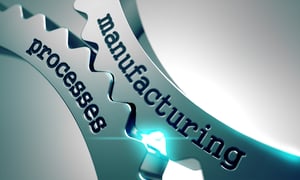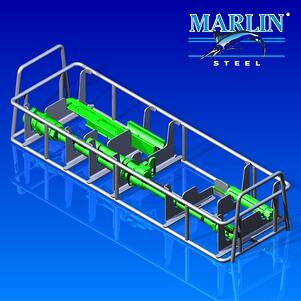 Every manufacturer wants to be more efficient. The faster a part can be completed, and the fewer resources used for that part, the better. By being more efficient, you can save time and money, improving your profit margins or being able to lower prices to beat competitors without gouging profits.
Every manufacturer wants to be more efficient. The faster a part can be completed, and the fewer resources used for that part, the better. By being more efficient, you can save time and money, improving your profit margins or being able to lower prices to beat competitors without gouging profits.
However, there are many obstacles to efficiency in manufacturing parts with exacting surface conditioning requirements. For example, the need to wash parts using an ultrasonic cleaning process can introduce some interesting challenges.
How can ultrasonic cleaning be an obstacle to efficiency in manufacturing parts? More importantly, how can you prevent ultrasonic cleaning from slowing down the production of your parts?
Common Issues with Ultrasonic Cleaning
 Ultrasonic cleaning is an excellent way to remove small particulates and contaminants from the surface of a part that absolutely has to have a flawless finish. Despite this, there are a few issues that some manufacturers have encountered when using ultrasonic cleaning which need to be addressed.
Ultrasonic cleaning is an excellent way to remove small particulates and contaminants from the surface of a part that absolutely has to have a flawless finish. Despite this, there are a few issues that some manufacturers have encountered when using ultrasonic cleaning which need to be addressed.
Some common issues include:
-
Scratched Parts. During the cavitation process, it is not unusual for a part with a delicate surface to be scratched by repeated impacts. This problem is most pronounced in hard metal baskets that are only just large enough to hold parts, or when multiple parts are allowed to collide during the wash process.
-
Parts Floating Out of the Basket During Wash. When parts are too small for the mesh of the basket being used to clean them, they may fall or float out of the basket while it is immersed in the aqueous parts cleaning solution. This can pose a risk of damage to both parts and the cleaning machine.
-
Recontamination from Debris Left in Basket with Parts. On the other hand, when a basket doesn’t have proper drainage, the particulate debris you’re trying to remove from your parts might be left in the basket with your parts, allowing said debris to redeposit onto your parts and requiring further washing.
-
Having to Move Parts from One Basket to a Specialized Ultrasonic Cleaning Basket and Back. Every time a part has to be handled during your parts washing/finishing processes, that is another chance for the part to get damaged, not to mention time lost on the finishing process as parts are unloaded and reloaded.
-
Baskets Frequently Breaking. The ultrasonic cleaning process is tough on parts washing baskets. If a basket isn’t built to handle the stresses of being exposed to vibrations of several thousand cycles per second while submerged in an aqueous solution, then it will break down fairly quickly.
These problems lead to parts needing to be reworked or even scrapped, the waste of time and materials, and high basket replacement costs. This slows down the manufacture of your parts and increases your operating costs, driving down profit margins.
With this in mind, how can your company stop ultrasonic cleaning from slowing down your manufacturing process and wasting your money?
One solution is to use a better basket.
How the Right Custom Ultrasonic Parts Cleaning Basket Speeds Production
Most of the problems in the bullet point list above are the result of inefficiencies in the design of the basket(s) being used to hold the parts.
For example, the basket cannot survive some other part of the parts finishing process, so parts have to be moved from a specialized ultrasonic cleaning basket to a different basket or vice versa. The basket doesn’t have the right soft coating or holds too many parts in a loose compartment, so parts get scratched during cavitation as they bounce around.
By using a basket that can survive all of your parts washing/finishing processes, you save time and reduce the risk for damage from mishandling parts. If using a “cradle to grave” processing basket saves three minutes of time for loading/unloading a set of parts, how many more loads of parts could your manufacturing plant process in a single day?
If your parts finishing cycle takes 30 minutes start to finish, then reducing that to 27 minutes by eliminating the basket changeover will allow you to improve productivity by 10%.
Better yet, if you cut the number of parts that had to be rejected because of surface damage caused by mishandling in half, how much would you save on time, labor, and materials remaking or refinishing damaged parts?
Odds are that, over time, the savings would be a significant amount.
Using fine wire mesh for ultrasonic cleaning baskets can let the cleaning solution to reach parts easily, and allow debris from the materials to drain from the basket once the process is finished.
Simply put, most of the issues manufacturers experience with ultrasonic parts washing could be solved by using the right custom parts washing basket for the job. With the right custom metal basket, you don’t have to let ultrasonic parts washing slow down your manufacturing process.


.gif)


